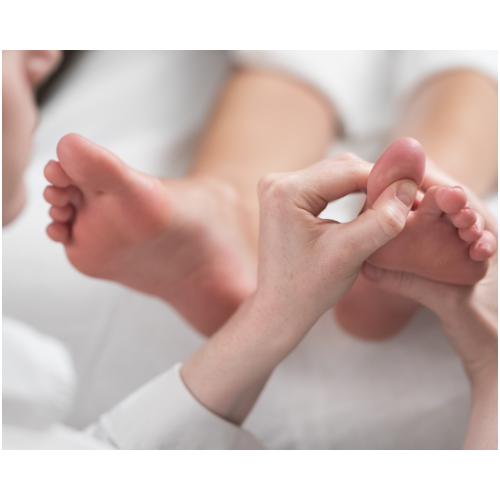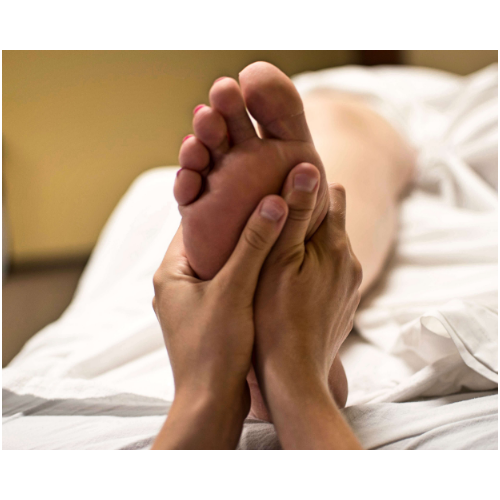Reflexology at HTC
Foot, Face & Hand Reflexology at HTC
Some Potential Benefits of Reflexology
- May relieve pains and aches
- Facilitates certain nerve function stimulation
- May aid in fighting anxiety and depression
- Can assist in stimulating circulation improvements
- May stimulate healthier processes in feet
- Can facilitate relaxation and better sleep
- May support reduction in PMS and menopausal symptoms
- Can aid in lowering blood pressure
- May aid symptom relief in particular cancerous conditions
- Can assist the detoxification process
What is Reflexology?
Reflexology is a non-intrusive complementary health therapy, based on the theory that different points on the feet, lower leg, hands, face, or ears correspond with different areas of the body.
Reflexologists work holistically with their clients and aim to work alongside allopathic healthcare to promote better health for their clients.



What happens at your first appointment?
A general medical history will be requested on your first treatment, and you will be asked to sign a consent form for treatment. This information will of course be kept securely stored and confidential at HTC.
Reflexology is a very easy therapy to receive; depending on the type of reflexology, the most clothing that will have to be removed for a treatment to take place will be your socks and shoes. The therapist will then use their hands to apply pressure to the feet, lower leg, hands, ears, or face, depending on the type of reflexology chosen. You may feel areas of transient discomfort during the treatment, but generally, the experience should be relaxing.
The therapist may recommend a course of treatments.
A brief history of Reflexology
Whilst the art of reflexology dates back to Ancient Egypt, India, and China, this therapy was not introduced to the West until Dr. William Fitzgerald developed ‘Zone therapy’. He believed that reflex areas on the feet and hands were linked to other areas and organs of the body within the same zone.
In the 1930s, Eunice Ingham further developed this zone theory into what is known as reflexology today. Her opinion was that congestion or tension in any part of the foot is mirrored in the corresponding part of the body.
What about pregnancy and Reflexology?
Obviously, when you are pregnant you want to make sure that everything you do is safe for both you and your baby. Reflexology is generally considered safe throughout pregnancy, provided there are no complications and your reflexologist knows that you’re pregnant. Complications such as miscarriages are more common in the first term of pregnancy, some reflexologists are not prepared to treat during the first trimester.
Talk to either Samantha, our Reflexologist or one of our osteopaths regarding the optimal time frames and benefits of Reflexology around pregnancy and postnatal phases. It would be often prudent for a patient to wait until after their 12-week scan before commencing a course of reflexology treatments, especially you have not had reflexology before.
There are some conditions where Reflexology should be avoided altogether and these include:
- Preterm labour – At any time before 37 weeks
- Placenta previa – If Grade II or III after 32 weeks
- Hydramnios – If there is too much amniotic fluid around the baby after 32 weeks.
For information relating to how Reflexology can interact with other treatments such as Physiotherapy, Osteopathy, Podiatry, Chiropody, Massage, Sports Therapy and Mindfulness & Wellbeing therapy speak to one of our practice senior practitioners.
